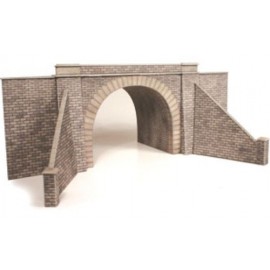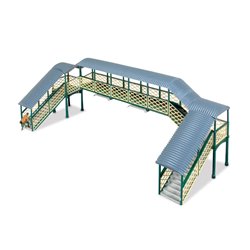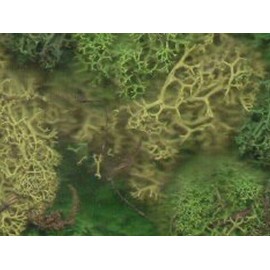Mainline Railways was a British model railway brand that operated between 1976 and 1983, introduced by Palitoy, the...
No products
Product successfully added to your shopping cart
There are 0 items in your cart. There is 1 item in your cart.
Search Tips
Easter shipping
Please note that couriers are not collecting on Friday 18th and Monday 21st April.
Orders will be dispatched on Tuesday 22nd April
How much scenery should you have on a layout?
If you are planning a model railway layout then you are likely making some crucial decisions, one of which will be how much track vs scenery should you plan to incorporate into the layout?
The correct answer to this question is personal to you and depends greatly on how you plan to enjoy your layout. The best way to decide how much scenery is required is to first consider what kind of layout is to be modelled. Here are some questions to ask yourself: How much shunting do you want to do? How fast do you want to operate the trains? Do you want a mainline or branch-line station? and are you trying to recreate a feel, theme or location? All of these questions will have bearing on your scenic requirements.
If shunting is your cup of tea then a lot of scenic interest will be within the railway's boundaries. Sure you will need some sort of backdrop, maybe some retaining walls and a backscene, but it will be the track layout, varying routes and destinations within your sidings that will provide you with the entertainment. This is not to say that the tracks and engine sheds are not considered to be scenery, on the contrary. If sidings are the focal point of the layout then high levels of detail within the scene will give you enormous pleasure.
Some modellers prefer big long trains rushing through the countryside. Too many tracks and not enough scenery in this scenario will make your layout resemble a 1980's Hornby train set. Model trains running at a reasonable speed are visually best portrayed by modelling what is known as "the railway within the landscape". This is when you have mainly scenery with just a few tracks running through the middle. This is because to model a high-speed line your tracks will not be able to have tight curves, the long sweeping curves that you need will take up a massive amount of baseboard so space for lots of tracks or a large station will simply not be available. However, the awkward leftover spaces and corners that your high-speed track plan will present you with are ideal for scenery. Our top tip is that large embankments or railway cuttings look great on this kind of layout.
Mainline stations are a desire for lots of modellers. You will find that your scenic requirements here are similar to the shunting yard scenario with most of the scenery being within the railway boundaries. Once again this doesn't mean less scenery, just a different kind. There is a lot of detail to be found within a large station. The trackwork itself becomes a huge feature and therefore requires great detail, along with station buildings, signals and signal boxes, footbridges, station sidings and the all too often forgotten people.
If like many modellers you are going to be recreating a theme or location then scenery once again becomes as, if not more important than the tracks, this is because dozens of tracks laid side by side do not portray an area or theme well, they could be anywhere!
So you will need to study the location or theme that you wish to model and note what scenery is there, look at buildings, types of hills, trees, signal boxes, station buildings, etc, anything that will anchor your layout to a date or location. Also, look if the area you are going to model is run down or pristine, does it have an agricultural, industrial, coastal or metropolitan feel to it, all these things you will need to know and try to recreate with your scenery.
Giving consideration to these points and asking yourself a few questions is the best way to start planning a model railway, they are not stone cast rules. They are just a few things to casually think about before you start that will help you design a track plan and allocate space on your baseboard. So, have fun and enjoy your scenic adventure.
Click here to receive the tips weekly in your mailbox. You can unsubscribe at any time.










